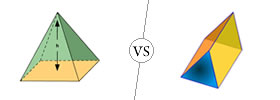Difference between Comet and Meteor
Key difference: A meteor is the flash of light that follows a piece of interplanetary debris as it enters our atmosphere. Comets, on the other hand, are icy bodies in the solar system that have wide orbits.
 Comets are icy bodies in the solar system that have wide orbits. These orbits can take anywhere from a few years to hundreds of thousands of years to complete. The comets’ orbits are often directed by the gravitational pull of the other solar bodies, such as the planets, the sun and the asteroids. The comet is composed of loose collections of ice, dust, and small rocky particles.
Comets are icy bodies in the solar system that have wide orbits. These orbits can take anywhere from a few years to hundreds of thousands of years to complete. The comets’ orbits are often directed by the gravitational pull of the other solar bodies, such as the planets, the sun and the asteroids. The comet is composed of loose collections of ice, dust, and small rocky particles.
When the comet passes close to the sun, the ice on the comet starts to melt. Hence, the debris and gases trapped in the snow starts to fall off and trail behind the comet. This gives the comet a ‘tail’ like structure, called the coma. The coma is thin, fuzzy, temporary atmosphere, which appears as a tail of the comet. The size of the comet can range from a few hundred meters to tens of kilometers across; the bigger the comet, the bigger its coma.
As of January 2011, there were 4,185 known comets, the most famous of which is probably the Halley's Comet, which passes the earth every 75–76 years. There are two main types of comets: short-period comets and longer-period comets. The short-period comets are commonly believed to originate from the Kuiper belt and associated area, located just beyond the orbit of Neptune. The longer-period comets are believed to originate in the Oort cloud which is a spherical cloud of icy bodies in the outer Solar System. Like Halley's Comet, short-period comets have short orbits, while longer-period comets take more time to come around.
A meteor, on the other hand, is the flash of light that follows a piece of interplanetary debris as it enters our atmosphere. Meteor is not the debris itself, but the flash of light caused by the debris. We often refer to meteor as a falling star or shooting star.
.jpg) The meteor, i.e. flash of light, is caused as the debris heats up due to the incandescence by the friction of the atmosphere. Many meteors appearing seconds or minutes apart, and appearing to originate from the same fixed point in the sky, are called a meteor shower.
The meteor, i.e. flash of light, is caused as the debris heats up due to the incandescence by the friction of the atmosphere. Many meteors appearing seconds or minutes apart, and appearing to originate from the same fixed point in the sky, are called a meteor shower.
Sometimes the falling debris is an asteroid that has been knocked off course and is pulled in by the earth’s gravitational pull. However, mostly the object is a meteoroid. A meteoroid is any debris in the Solar System. The size of a meteoroid can range from the size of a grain of sand to a boulder sized particle weighing 220 lbs (100 kgs).
When these meteoroids enter the earth’s atmosphere they cause a meteor, i.e. a trail of light, which we refer to as a falling or shooting star. Usually, the meteoroid is small enough that it gets burned up in the process. However, if the meteoroid survives and lands on the surface of the Earth, or parts of it do, they are termed as meteorites.
The main difference between comets and meteors is the fact that meteors are meteoroids that fall to the surface on the Earth. Whereas, comets are celestial objects that follow a fixed elliptical orbit around a star, in our case, the Sun. The comets may follow the same orbit for millions of years. Comets do not enter the Earth’s atmosphere are usually hundreds and thousands of miles away, are just visible as they pass by Earth.
Image Courtesy: earth-and-sky-new-zealand.wikispaces.com, space.com









Add new comment